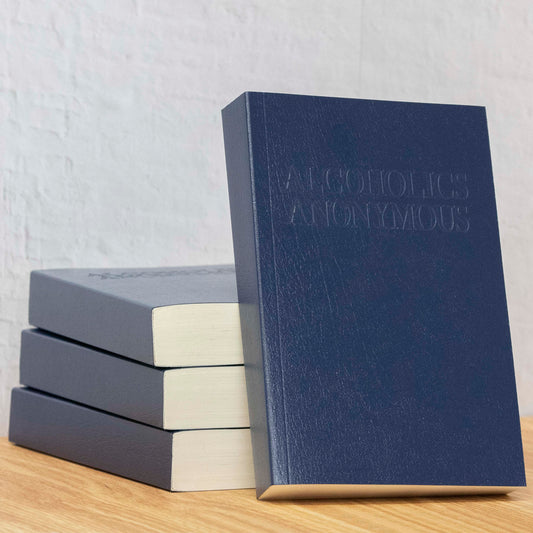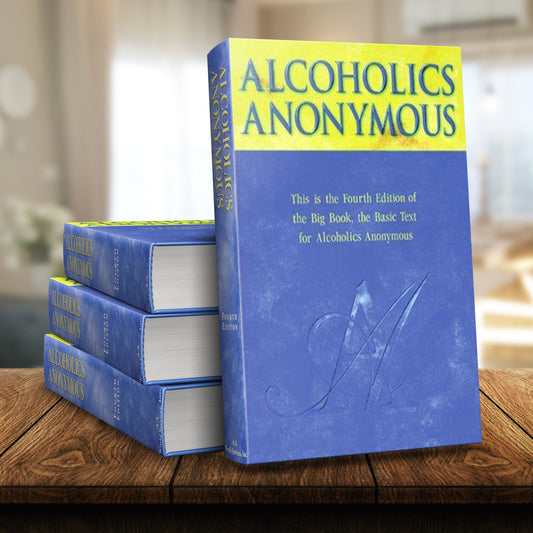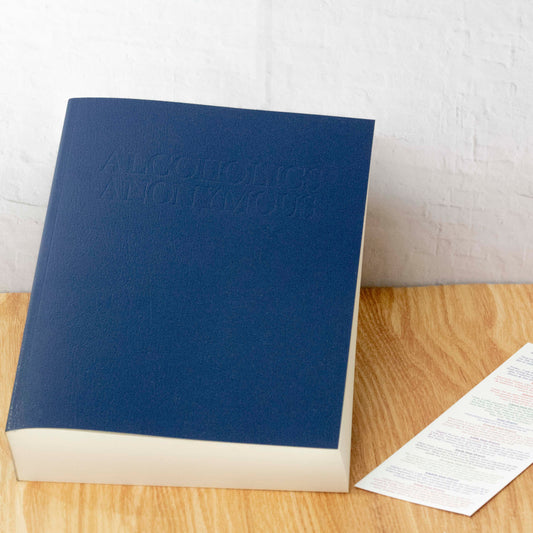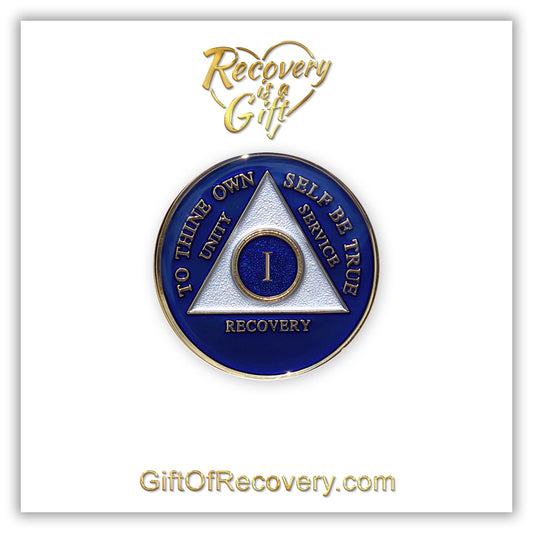
The History Of The Big Book Of Alcoholics Anonymous
Share
An Astonishing Best Seller
One of the best-selling books of all time, Time magazine places the so-called “Big Book” Alcoholics Anonymous on its “100 best and most influential books written in English” list. The Library of Congress designates it as one of the “88 books that shaped America.” (Wiki). The book Alcoholics Anonymous, written by co-founders Bill W. and Dr. Bob, was first published in 1939. The second (1955), third (1976), and fourth (2001) editions maintain the integrity of the first 164 pages of the book with only minor changes in wording here and there. These seminal pages of the Big Book offer a step-by-step guide to working through the now famous Twelve Steps of recovery. These pages integrate the authors’ and first members’ direct personal experiences with taking each step, always with a counselor, a friend or a “sponsor” in the program of Alcoholics Anonymous. These pages thus function as a set of instructions to working through the steps in order. Through a compilation of anecdotes and first-person accounts of the founders and early members, the first 164 pages of the book sets out the principles and the context for how a growing spiritual orientation coupled with forming powerful social connections with other recovering alcoholics (usually in AA meetings) can change a hopeless, helpless alcoholic into a thriving human being who can stay sober for a lifetime, one day at a time.
Synopsis Of The ‘First 164’
In a nutshell, the now-famous “first 164” pages offer a first-hand guide through the twelve steps. After defining the condition of alcoholism in a Preface, “The Doctor’s Opinion,” Chapter One opens with the founder Bill W.’s personal story. Once a successful businessman, it describes in detail how he was entirely unable to stop drinking on his own. This theme is a take-away message of the book. “There Is a Solution,” Chapter Two, describes early members discovering the “solution” to their shared dilemma of wanting to quit drinking but not being able to do so. The first three steps of the program are detailed here, in old-fashioned anecdotes and sometimes inspired prose. Chapter Three, “More About Alcoholism,” portions of which are read aloud at many meetings, has often been reproduced and handed out to social workers, doctors and psychologists by way of explaining and defining the disorder as members understand it. It clarifies the compulsive nature of alcoholism to experts who do not recognize its complexity and for laymen who may not be able to relate to or forgive it otherwise.
Chapter Four, “We Agnostics” works to clarify that a concept of God or NOT God, a god of each individual member’s own understanding, functions as a cornerstone to solidify the spiritual nature of the program. Its deadpan humor gently helps to explain that, to one suffering from a potentially deadly illness, it might be possible to at least TRY to keep an open mind. This chapter opens readers to the possibility that something, anything might be considered “a power greater than yourself.” It makes it clear that, while any power greater than yourself will do, something other than the beliefs, feelings and thoughts of the alcoholic himself must be turned to for advice if anything is to change. Those who go it alone go back to the bottle, usually. Chapter Five, “How It Works,” and Chapter Six, “Into Action,” offer explicit guidelines for taking an objective inventory, sharing its explicit details with another, becoming wiling to invite that “power greater than yourself” in to help change what you and your counselor or sponsor agree needs changing. “The spiritual life is not a theory,” it intones. “We have to live it,” (BB p. 83). “Working With Others” and the chapters “To Wives,” “The Family Afterward,” and “To Employers” dives more deeply into the sometimes complex ways alcoholism contaminates relationships with others, and what those wanting to get better as well as those in relationships with alcoholics may do to improve things. In these chapters, steps four through twelve are thus cited and explained in anecdotal detail. The final chapter of the first 164, “A Vision for You,” returns to the spiritual theme of how recovery from a life-wrecking, potentially fatal illness is possible. Here, the ramifications of Steps 10, 11 and 12, taking a personal inventory, learning to use prayer and meditation, and working with others are revisited and further explored.
Revisions And Personal Stories
The four editions of the book Alcoholics Anonymous also include a final section called “Personal Stories,” written in first-person by actual members of Alcoholics Anonymous. Here is where the most changes to the Big Book have been made over time. The first edition of the book includes the sad and sometimes hair-raising tales penned by apparently down-and-out drunks that likely reflected and further substantiated the traditional western stereotype of the alcoholic. As the organization of AA meetings spread rapidly to all of America and beyond after World War II, however, and in preparation for the second edition published in 1951, several new stories were added to help broadened the scope of who speaks about and who recovers from the disorder. The “Foreword to the Second Edition” says, “Since the original Foreword to this book was written in 1939, a wholesale miracle has taken place….In the [sixteen years} between printings, Alcoholics Anonymous has mushroomed into nearly 6,000 groups whose membership is far above 150,ooo recovered alcoholics.” Perhaps not entirely coincidental, it was shortly after the publication of the second edition of the book that, in 1956, the American Medical Association declared alcoholism a disease. It is not until the third edition in 2001 that the classic story “Women Suffer Too” is included. By this time, Alcoholics Anonymous, both the book and the program which uses the book as its guide, had begun to be recognized and accepted world-wide. The additions and alterations to the Personal Stories section of the Big Book continued to reflect changes in social norms in such social movements as the expansion of women’s rights. An American by birth, Alcoholics Anonymous naturally mirrors the insights and ongoing issues of its birthplace.
The preface to the second edition (1955) emphasizes that AA is neither a religious organization nor a medical one, and that it includes members from all religions and those with none at all. In Alcoholics Anonymous, religion and politics are “outside issues” and members take what the like of scientific medical advice from doctors of their own private choosing. The third edition (1976) adds the personal story “Women Suffer Too,” for the first time explicitly recognizing women’s presence in the fellowship. The fourth edition preface (2001) acknowledges the “sweeping changes in society,” both in science and technology, that mediate and alter the kinds of meetings and the way information is dispersed. As an organization, AA continues to grow exponentially, informed by the Big Book of Alcoholics Anonymous. A new edition is in the works.
Continuing Relevance
In “A Vision for You,” the final chapter in the first 164 pages, it says, “Our book is meant to be suggestive only. We realize we know only a little. God.” [or used as an acronym for Good Orderly Direction, some say] “will constantly disclose more to you and to us. Ask Him in your morning meditation what you can do each day for the one who is still sick. The answers will come, if your own house is in order. But obviously you cannot transmit something you haven’t got. See to it that your relationship with God is right, and great events will come to pass for you and countless others. This is the Great Fact for us,” (BB p. 164).
Will there be another, more thorough revision of the Big Book? As out dated as the language and the scientific overviews have become, the Big Book of Alcoholics Anonymous strikes a tone that many continue to find inspiring. It is humble in its claims, and open to what may come. While some critics argue that its time has passed, many, especially those who actively benefit from Twelve Step programs who number in the millions by now, believe that when something works, it may not need that much fixing. The Big Book with its detailed description of the Twelve Steps and the personal stories reflecting their need continue to work for thousands of clean and sober alcoholics and addicts. In the chapter “More About Alcoholism,” Bill and Dr. Bob put it like this, “We have tried every imaginable remedy. In some instances, there has been brief recovery, followed always by a still worse relapse. Physicians who are familiar with alcoholism agree there is no such thing as making a normal drinker out of an alcoholic. Science may one day accomplish this, but it hasn’t done so yet,” (BB p. 31). Some say the Big Book of Alcoholics Anonymous holds its own as inspired work of spiritual literature with a powerful message that continues to change lives for the better.
References
Alcoholics Anonymous: The Story of How Many Thousands of Men and Women Have Recovered from Alcoholism. Fourth Edition. Alcoholics Anonymous World Services, Inc. New York. Book. 2001.
“Alcoholics Anonymous Over 85 Years of Growth.” Archived Wayback Machine.Web,2013.
“The Big Book (Alcoholics Anonymous).” Wikipedia. Wed. 2021.
“Books that Shaped America.” National Book Festival. Library of Congress. Web. 2021.
Kurtz, Ernest. Not God: A History of Alcoholics Anonymous. Hazeldon Publishing. 1979.




